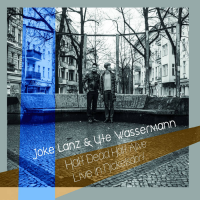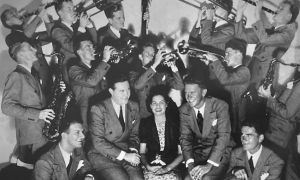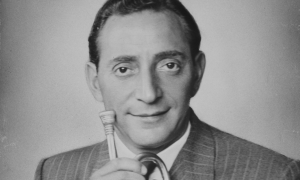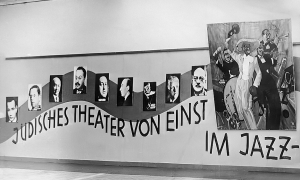Home » Jazz Articles » History of Jazz » The Mysterious Ms. Morel
The Mysterious Ms. Morel
I guess I really don't know how I feel about myself as a singer.
—Terry Morel
"Never heard of her." —Me
"Rings a bell." —Angela Levey
"An underground singer." —Terry Gibbs
"The mysterious Ms. Morel." —Michael Steinman, Jazz Lives
All these descriptions fit a singer from Philadelphia whose memory has almost completely faded. It's true, there are some web sites dedicated to following female singers from the 1950s and 1960s who were never quite household names, but with a few exceptions, Terry Morel has managed to elude even most of them. Yet it's ironic, in a way. When the local press in Philly had a jazz columnist, especially one very good one, Nels Nelson, her name periodically surfaced as a jazz singer from Philadelphia who was worth listening to. Nelson was a columnist with the Philadelphia Daily News for over 40 years. He knew his stuff. "Off the top of his head," Nelson, who passed away in 1996, said in 1987, he'd name singers like Nina Simone, Ruth Price, Betty Roche and Pearl Bailey, fancy company for an unknown. And when Morel got left off some such list, a devoted fan would write to complain about her absence. I thought I knew a little about Philly singers, from family connections in South Philadelphia. But Terry Morel never made my radar screen. And now I wonder why.
Her given name was Florence Cohen. She told Kirk Silsbee, a major source of information about Morel for me, that she was "raised on the streets of Philadelphia." This would have been South Philadelphia and specifically Morris Street, not far from where part of my Mother's family lived. It was working class, Italian and Jewish in the 1930s and 1940s, but safe enough. Cohen's family owned the property and had tenants. I suspect that Florence and my Mother, virtual contemporaries, went to the same elementary school, Furness Public School, and that the Cohens were better off than Florence (Terry) allowed. Florence was obviously bright as well. She went to Girls High while my Mother went to South Philadelphia. At that point, their paths diverged sharply. There is a nice portrait of "Floss" in the 1943 Girls High Yearbook noticing her "lovely voice and cheery smile." Street kid is not what I would have called Florence. Nor my Mother.
By 1946, Florence, now singing as Terry Morel, was on the road. She was with someone called "The Tim Welsh Quartet" who ran through several female vocalists in Troy, New York. Spring of 1947 found her closer to home, singing at Nick's Town Tavern in Delair, New Jersey and Chubby's Cafe in West Collingswood. These were a part of the night club scene just over the bridge from Philadelphia, and they did a lot of their business by evading Pennsylvania's notorious blue laws, statutes that basically made it illegal to have fun on Sundays ("I went to Philadelphia last weekend. It was closed.") New talent, b-list name acts and the occasional established singer showed up at these places. Philly musicians like Charlie Ventura sometimes had an ownership interest. Ventura had a place in Berlin, New Jersey on the White Horse Pike known as The Open House and had Mary Ann McCall, Dave McKenna, and Sonny Igoe with him. So "club in South Jersey" was not synonymous with minor league. And there was always the Red Hill Inn, in Pennsauken, which went to an exclusive jazz policy and became a major venue in about 1955. It must have taken Morel about that long to get into Harvey Husten's "Jazz in Jersey" orbit, which she did when she was singing with the Tony Luisi Trio. She may have been part of a house band at the Red Hill for a while, but I can't be sure. Morel was even the featured 1955 New Year's Eve act in a Philly club known as the Celebrity Room, which had a certain notoriety when chorus girl Lillian Reis took over and got mixed up in an infamous robbery somewhat later.
She made some New York appearances by then as well, a selling point for publicity in Philadelphia clubs. "New Jazz Singing Favorite of New York" announced the Celebrity Room. She and Ruth Price at showed up at Ellis Tollin's Music City jam sessions, now famous (erroneously, it seems) as the place where Clifford Brown played his final gig before being killed in an accident on the Pennsylvania Turnpike. Music City was a major stopping point for a lot of boppers who passed through Philly. Tollin ran a controlled jam session but was accustomed to let major Philly players sit in, people like Ziggy Vines and Billy Root. Morel was part of that crowd, but she seemed intent on not becoming a local fixture. Even though she hung out at the Blue Note on Ridge Avenue, where, by her own account, she got to know Miles Davis and sang some with him. An extended play recording on Prestige (EP-1374, Terry Morel Sings with the Tony Luis (sic) Trio) apparently got a lot of time there thanks to a bartender who liked it. On first meeting Miles, she recounts Davis as saying something like "Why didn't you tell me who you were?" Her answer, which sounds all too plausible for Morel: "You didn't ask."
If this was Morel's first recording, it was a winner. There are only four tunes on the 45 EP, but they are lovely. "But Not for Me" and "I Remember You" are lovely and her voice simply shines with sincerity. That is really their essence. There are no gimmicks, only Luisi's deft accompaniment to Morel's unadorned voice. I don't know who wrote the lyrics to her version of "I Can't Get Started," but they're not Ira Gershwin's: "I buy from Grandma Moses, but I can't rub noses with you." There's a lot of genuine emotional turmoil here, whatever Morel was going through in her life. Considering that Miles was one of the principal artists in the series, it's no wonder he was surprised to meet her. And it's no wonder that interest in her was growing.
Around 1955, Ms. Morel got another break. She was singing in a club in New York and Bethlehem Records recorded her. This too was no small thing. According to David Edwards and Mike Callahan's Bethlehem Discography, Part 2, the line-up included Bob Dorough, Chris Connor, Bobby Troup, Herb Jeffries, Jerri Winters, and the cream of hard bop instrumentalists, like Urbie Green, Frank Rosolino, Stu Williamson, and Howard McGhee. About the best you can say of the recording, BCP-47, "Songs of a Woman in Love," is that it is uneven. According to Kirk Silsbee, Morel herself didn't like the recording at all, calling it "that horrible album... I've always hated [it]." Morel told Silsbee that she didn't like the material and was only introduced to the musicians, including Ralph Sharon, Herbie Mann, Jay Cave, and Christy Febbo, the same night. The live setting, room acoustics and tepid applause did not help. Morel's chops run hot and cold, and on a couple of the tunes, she is behind the beat while the band is somewhere else. A review in Billboard was dismissive. As much as it pains me to say, if this were the only example of Morel's work, you would understand why she never went too far. Contemporary recordings from Jane Fielding or Lucy Ann Polk were better in every way. Her previous recording with Tony Luisi was much better. Bethlehem did her career no favors, other than allowing record dealers to put her name up in sales advertisements with the likes of Charles Mingus, Conte Candoli, and Stan Levey. And there is no bad publicity, correct, especially the free kind? Still, Morel had ears. She would've known the recording, publicity or no, was a mixed blessing.
Yet, in late 1955, Morel ended up doing one of Harvey Husten's "Jazz in Jersey" nights in Gloucester City, NJ, with Miles Davis and Ray Bryant on the bill. This was another gig of some note. Yet it wasn't enough to keep her around Phily. Husten did the liner notes for "Songs of a Woman in Love" so he was in her corner. Odd.
The reasons for Morel's departure for the West Coast thus remain a mystery. They may have been largely personal. She was by no means a major star in Philly, but she was making a living in a crowded field—we don't remember today quite how many very good women singers there were in the 1950s—and attracting more notice. A move to Los Angeles in 1957 must have seemed logical at that point. Perhaps it was. At least a move to Laurel Canyon was because Florence Cohen from Philadelphia became Terry Morel, a habitue of the jazz and Bohemian scene there. She lived modestly, in something of a "treehouse" for $60 a month, and hung out with a crowd that, with due respect to South Philly, could have only been found in LA. Lee Wilder, Larry Bunker, Joe Maini, Cannonball Adderley, June Christy, Paul Horn, and her friend, Bob Dorough were all there, among others. She had known Miles from Philadelphia, and he showed up too.
This has been amply documented by Kirk Silsbee in Harvey Kuberniks's book, Canyon of Dreams, with a photo of the by-then ravishing Morel with Cannonball as living proof. If ever there was a place for a jazz singer to make a mark, to get to know the right people in the business, this would have been it. Beautiful, talented, witty, you might think it would all come together there. And, for a while, it more or less did. She started gigging around Southern and Central Coast California appearing as "Bethlehem Records Star" (she must have loved that), Terry Morel on one bill with Bill Perkins. She was described, unblushingly, as "a wee bit of a lass, tiny as a bar of soap, sweet as a honey comb (sic), irresistible as a powder puff." She appeared with fellow Philadelphian Buddy DeFranco as well, who also represented a considerable upgrade from what she got back East.
There were bigger things in the works, including television appearances. Terry made two appearances on Bobby Troup's KABC show Stars of Jazz that ran from 1956 through 1958, but as far as anyone knows, the kinescopes have disappeared. Fortunately, the soundtracks of the broadcast March 4, 1957, exist, CAL 3001, Oscar Peterson/Gerald Wiggins, Sessions/Live. It was a Monday night, and not a big day historically. It was, however, a big moment for Morel. Backed by the Gerald Wiggins Quartet, she did "But Not for Me" and "What is There to Say." Neither disappoints and "What Is There to Say" is, well, sensational. It is beautiful, plaintive, honest, and unadorned. If her outing for Bethlehem was not too hot, her performance here is exceptional. It's pure emotion without being sentimental, and really shows what Morel could do. There is some reverb used in the beginning, apparently fashionable at the time, but Terry is right on the microphone by the conclusion. A lovely recording.
One of Morel's biggest boosters in LA was the radio personality Frank Evans. In 1962, he hosted a short-lived television show on KTLA called Frankly Jazz. On November 10, 1962, Frank had Terry on, accompanied by Clare Fischer, Gary Peacock, and Larry Bunker. Once again, she did "What is There to Say." If anything, Morel was even better for Evans than she was for Troup., The starkly empty set, wreathed in cigarette smoke, which profiled Morel from different angles, only heightened the mood. It's a performance still worth watching, and Evans was obviously entranced. "Wow. She's something else, isn't she"? he observed when she finished. " Evans promised to have her back again soon, but the show, which was remarkable for the talent it featured, didn't last long. That's too bad because it is the only kinescope I know of Morel singing.
She was also on the radio as well as a sort of "underappreciated talent," which was accurate enough, because she was singing out in El Monte for $5 a night, maybe at the Caprice, a well known after hours club. "Talk about being dedicated to your art," Morel wryly observed. She got involved with pianist Joe Albany, with whom she performed in Los Angeles. Albany, whose chaotic life has been chronicled by his daughter, AJ Albany, and made into a biopic Low Down, was ostensibly trying to get clean. Morel told Kirk Silsbee that Albany's Mother was trying to convince her to marry Joe, probably a very bad idea, even if she didn't reject the notion outright. But eventually, Albany saw Morel, still very attractive, as a potential source of income for him as a sex worker. Anyone familiar with the outlines of Albany's life will probably find this credible, although AJ never hints at any of his history with Morel. As early as January 1962, Morel was still performing with Albany at the Playboy ("Modern Jazz and 3AM Breakfasts)" on Melrose Avenue. Still, Terry broke it off, she broke it off, adding, "Musically, he was a genius. My ears told me that."
Morel had come back East and sang at the 1961 Newport Jazz Festival All Stars after being invited by George Wein. As Terry herself pointed out, she got good reviews, especially from Nels Nelson, who observed that she hadn't been wasting her time on the West Coast. Whatever the case, Morel was home. In 1965 and 1966 she was again gigging around Philadelphia; in Wilmington DE; at Henry's in Haddonfield, NJ; and even singing in the lounge at the Latin Casino in Jersey when Nancy Wilson was the headliner. Yet, for all that. she hadn't gotten much beyond the cabaret gigs that she was doing in the late 1940s. This couldn't have been easy for her. For one thing, Morel was twenty years older, 37 years old in 1962, approaching middle age. For another, the British Invasion was in full swing, turning the world of pop music upside down and dealing a body blow to jazz. I intend no malice in pointing out that Herb Alpert's Whipped Cream and Other Delights probably outsold Coltrane's A Love Supreme by a factor of ten. These are commercial realities that jazz players know (and knew) only too well. And Morel, who had worked for the princely sum of $5 a night was no fool. Worse, there were a lot of more-than-passable female jazz singers in the 1950s and 1960s. Their names would barely register today—Morel was hardly the only one out there. It was a crowded field. A good publicist never hurts, but as far as I know, she probably could never afford one. I doubt she really wanted one. She told Kirk Silsbee, "I didn't push." That was part of the problem. Julie London said much the same thing, yet enjoyed considerably greater commercial success and married Bobby Troup. Supply and demand are a fact of a musician's life, like it or not.
Terry's personal story is, alas, not unfamiliar. I can think of another Philadelphia singer who got off to a quick start: a nice recording contract; airtime, club dates; even major network television appearances. Her personal life, however, went rocky and she turned away from jazz and pop. Then she faded out. Even worse, in some ethnicities—not inevitably, but not infrequently— there was a lingering suspicion that an entertainer, especially a woman, was somehow disreputable. This was true for men as well, not to mention an attractive woman. Ziggy Vines, one of Morel's contemporaries from Philadelphia, as gifted a jazz saxophonist as he was, apparently got no support from his family. Quite the contrary. While I don't know this was true for Morel, I don't know that it wasn't. Morel did tell Kirk Silsbee she missed her parents. Yet she was something of a Bohemian. Morel knew enough to stay away from hometown characters who were bad news, but she had advanced social views for a country just beginning to confront segregation. In jazz, famously, that was—and is—no small thing. There were other subjects darker still. There is no evidence—not a document to be located—that Morel ever had any underground associations, connections that could help make or break an entertainer then. There was talk of her appearing in Las Vegas, but as far as I know, Morel never did. How and if any of these considerations influenced her career is simply impossible to say. Or maybe it was bad luck. In the last analysis, the results were the same. Morel's career as a singer did not prosper.
"Well," she told Kirk Silsbee. "I didn't want to be a middle age jazz singer. Rock 'n Roll was coming in, so I stopped singing. I took a job as a phone solicitor....I had to pay my bills and I didn't have a lot of work experience....I've never been afraid of hard work and I had to eat....I worked at Schwab's drugstore on Sunset from '67 to '70....I worked [at a store called Harold's Place from '75 to '81] on Melrose... We sold used clothes, furniture, and oriental rugs—just beautiful things....and I could sell merchandise like I never knew I could.." Perhaps most revealing of all, "I guess I really don't know how I feel about myself as a singer." This is no place for armchair analysis, but ambivalence marks Morel's time as a singer. Even artists who believe in themselves can find the life tough going.
There was one last recording, and in an amusing way, perhaps her most successful of all. Her close friend Bob Dorough invited her in to sing on Schoolhouse Rock, the long running educational series on ABC. In 1973, Terry was the lead backup on "Conjunction Junction, What's Your Function" with trumpeter Jack Sheldon on lead. "You have no idea how funny it all is to me and the perks I get when people find out I sang on that.: I don't doubt it. Maybe if she had appeared on Sesame Street, I would have known about Terry sooner.
Terry Morel died of cancer in 2005. She was cremated and there is no grave site to visit. I'm sure that's just the way she wanted it. Whatever else she said or thought, her death certificate simply gave her occupation as "Singer." So fitting. Rest in peace, Ms. Morel.
Tags
PREVIOUS / NEXT
Support All About Jazz
 All About Jazz has been a pillar of jazz since 1995, championing it as an art form and, more importantly, supporting the musicians who make it. Our enduring commitment has made "AAJ" one of the most culturally important websites of its kind, read by hundreds of thousands of fans, musicians and industry figures every month.
All About Jazz has been a pillar of jazz since 1995, championing it as an art form and, more importantly, supporting the musicians who make it. Our enduring commitment has made "AAJ" one of the most culturally important websites of its kind, read by hundreds of thousands of fans, musicians and industry figures every month.





















